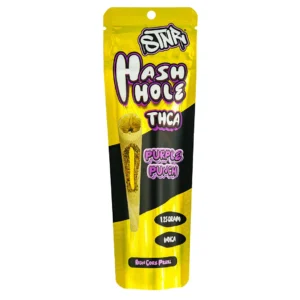Understanding the Legality of 2 Gram Disposables in California
Introduction to 2 Gram Disposables: Definition and Use Cases
2 gram disposables are the next step up in cannabis vaping technology, packing twice the capacity of regular 1 gram cartridges. Think of them as an all-in-one package – they come with cannabis oil already loaded and a battery built right in, so you don’t need to worry about separate parts or chargers.
These devices are especially helpful for medical cannabis patients who need reliable access to their medicine – fewer trips to the dispensary means better management of chronic conditions. Recreational users love them too, particularly when they’re planning longer trips around California and want something dependable and discreet.
Here’s what makes these devices stand out:
- A battery that lasts as long as your oil does
- Pre-set temperature controls for the perfect hit
- Safety features that keep kids out, meeting California’s standards
- Adjustable airflow so you can customize your experience
California Cannabis Laws Overview: The Legal Framework Affecting Disposables
Since California passed Proposition 64 in 2016, making adult-use cannabis legal, 2 gram disposables have found their place in the market. They’re perfectly legal here, as long as they meet state requirements and contain approved forms of THC, whether that’s Delta-9 or Delta-8.
Three main agencies oversee cannabis in California: the Department of Cannabis Control (DCC), the California Department of Public Health (CDPH), and the California Department of Food and Agriculture (CDFA). Each one handles different aspects of making sure cannabis products are safe and legal.
Here’s what you really need to know about California’s cannabis laws:
- You must be 21 or older to buy and possess cannabis
- Only buy from licensed dispensaries
- There are limits on how much you can purchase
- Everything gets tested for safety and strength
These rules help explain why some products make the cut while others don’t. California tries to strike a balance – keeping cannabis accessible while making sure what you’re getting is safe to use.
The California Cannabis Regulation Context
How 2 Gram Disposables Fit into “Cannabis Products” Classification
In California’s current cannabis laws, 2 gram disposables are classified as manufactured cannabis products. These aren’t just simple vapes – they need to meet detailed quality and safety standards. The DCC puts them in the cannabis concentrates category, which comes with its own set of rules about how they’re made and sold.
This classification affects everything from production to how they end up in your hands. Manufacturers need special licenses and must follow strict quality control steps to make sure every device is safe and works properly.
Detailed Breakdown of State Excise and Special Taxes on Cannabis Products
Cannabis taxes in California can make your head spin. The 2024 laws include several layers of taxes that add up quickly:
- 15% state excise tax on what the product typically sells for
- Local taxes that vary by city and county (usually 5-15%)
- Regular state sales tax (7.25%)
- Sometimes extra local business taxes
So if a 2 gram disposable costs $60 at wholesale, you might end up paying $80-90 after all the taxes. This money helps fund state programs and helps regulate the cannabis market.
Current Packaging, Labeling, and Advertising Regulations for Cannabis Products
California has some of the strictest rules about how cannabis products need to be labeled and packaged. Every 2 gram disposable must show:
- Exactly how much THC and other cannabinoids are in it
- Numbers to track the batch and lot
- When it was made and packaged
- Health warnings
- Proof it’s child-resistant
The labels can’t come off easily, and they have to be easy to read. Companies can’t make their packaging appeal to kids or make health claims they can’t prove. The packaging needs to be tamper-proof and keep kids out, while still being environmentally responsible.
Advertising rules are just as strict – all promotional materials need proper warnings and can’t make false claims. These rules keep changing as the market grows, always trying to balance consumer protection with environmental concerns.
Retail and Accessibility Regulations for 2 Gram Disposables
Age Restrictions and Access Control Measures
In California, you need to be 21 or older to buy cannabis products like 2 gram disposables for recreational use. If you’re a medical patient, you can access them at 18 with proper documentation and caregiver approval. These rules match up with California’s tobacco laws, keeping things consistent across both industries.
Dispensaries have to be really thorough about checking ages. They need to:
- Check your government ID when you walk in
- Check it again when you buy
- Train their staff to spot fake IDs
- Keep records of all their age checks
This isn’t just red tape – stores that don’t follow these rules can lose their licenses or face other serious penalties. That’s why you’ll notice dispensaries taking these checks very seriously.
Retail Licensing Requirements for Selling Cannabis Products Including Disposables
Opening a cannabis store in California isn’t as simple as getting a regular business license. You need permits from both the state and your local area, and the process takes serious planning and investment.
To get licensed, stores need to show they have:
- Detailed plans for how they’ll run their business
- Good security systems and cameras
- Background checks for all employees
- The right insurance coverage
- Permission to operate in their location
They also need to prove they can track every product from the moment it arrives until it’s sold. This helps keep California’s legal cannabis market honest and safe for everyone.
Smoke-Free Zones and Usage Restrictions Specific to E-Cigarettes and Cannabis Products
Even though cannabis is legal in California, you can’t use 2 gram disposables just anywhere. The rules about where you can vape are similar to regular smoking rules. You can’t use them in:
- Public buildings or offices
- Within 1,000 feet of schools or places where kids hang out
- Buses, trains, or their stations
- Restaurants and bars
- Many public parks and beaches
There are also rules about staying away from building entrances and windows. Some cities have even stricter rules, especially in busy urban areas where other people might breathe in the vapor.
Property owners can add their own restrictions too. If you’re visiting or live here, it’s smart to check local rules to avoid any problems and be respectful of others.
Enforcement and Compliance: Navigating Legal Obligations
Penalties for Non-Compliance with State Regulations on Cannabis Sales
The DCC takes rule-breaking seriously, though they usually start with education rather than punishment. With new requirements from AB 1894, businesses need to move quickly to update their products or face consequences.
Here’s how penalties typically work:
- First time: You’ll get a warning and need to fix the problem
- Later violations: Fines from $1,000 to $50,000
- Serious cases: You could lose your license
- Really bad violations: Might face criminal charges
The punishment usually depends on what rule was broken, how it affected public safety, and whether you’ve broken rules before. Selling untested products or not following disposal rules can get you in trouble fast.
Reporting Non-Compliant Products: A Guide for Consumers and Retailers
Everyone in the cannabis industry plays a part in keeping it safe and legal. The DCC is working hard to teach people about the new rules and make it easier to report problems.
If you need to report something that’s not right, here’s what to do:
- Take pictures and write down what’s wrong
- Note down batch numbers and when it was made
- Get the store’s information and when you bought it
- Keep your receipt and packaging
One big issue right now is how to dispose of vaping products properly. There’s no regular recycling system for cannabis vapes yet, though some places are trying to help – San Francisco has battery collection spots, and some companies like Sauce and Plug Play have their own recycling bins.
The new law (AB 1894) was created to avoid banning disposable vapes completely. Instead, it focuses on making sure these products don’t end up in regular trash or recycling through clear labels. Companies are now encouraged to help customers dispose of cartridges, vape pens, and batteries properly.
To report problems:
- Use the DCC’s online complaint system
- Give them all the details you can
- Check back on your complaint
- Know that you can stay anonymous
Future Trends and Legislative Updates to Watch Out For
Impending Changes in Legislation Affecting the Sale of Cannabis Products
California’s cannabis rules keep evolving, and there are some interesting changes coming up. Lawmakers are looking at new ways to handle how 2 gram disposables and other cannabis products are sold, taxed, and regulated. They’re trying to fix current problems while keeping everyone safe.
Industry experts see these changes coming:
- Easier licensing processes to help businesses get started
- New rules about testing for harmful substances
- Changes to taxes to help legal businesses compete with the black market
- Better ways to track products from production to sale
The goal is to make the market work better while keeping high safety standards. These changes could affect what products you can buy and how much they cost.
The Role of Sustainability Efforts in Shaping Product Standards
Environmental concerns are becoming a big deal in cannabis regulations. The industry is starting to focus more on being eco-friendly, especially when it comes to disposable vapes. Companies are being pushed to create products that don’t harm the environment as much.
New environmental initiatives include:
- Required recycling programs for vape parts
- Packaging that breaks down naturally
- Rules about using less energy in manufacturing
- Rewards for companies that go green
Companies now need to think about their products’ entire lifecycle – from how they’re made to what happens when people are done with them. This helps reduce the environmental impact of the cannabis industry.
Advocacy and Reform Efforts: Predictions for Future Legal Adjustments
Cannabis advocacy in California is still going strong, with different groups working together to improve the rules. Consumer groups, industry organizations, and environmental advocates are all trying to create better policies.
Future changes might focus on:
- Programs to help more diverse groups join the industry
- Better ways to protect consumers
- Making it easier for small businesses to follow the rules
- Getting ready for possible interstate sales if federal laws change
Experts think we’ll see more detailed rules that help the market grow while protecting people and the environment. The way 2 gram disposables are made, sold, and regulated might change quite a bit. While some changes might be challenging at first, they should lead to a stronger and more sustainable market in the long run. The key is staying informed and ready to adapt as things change.










